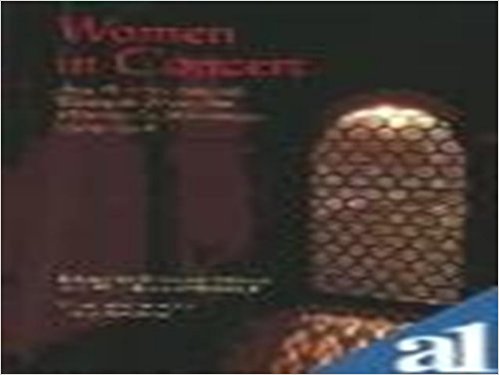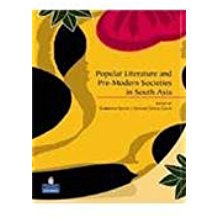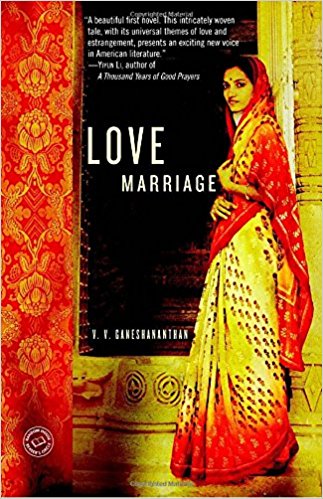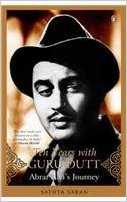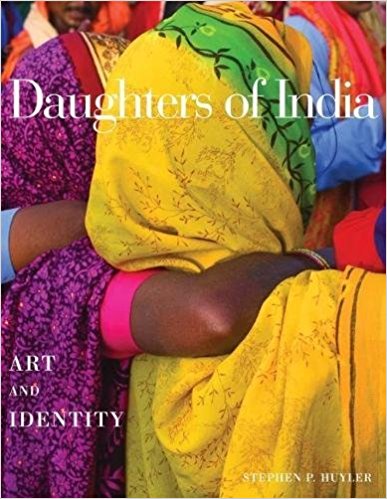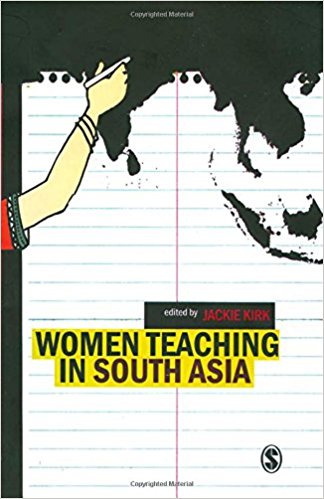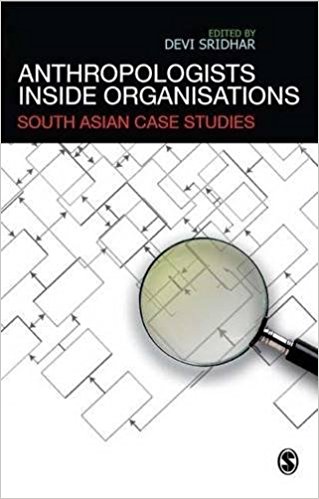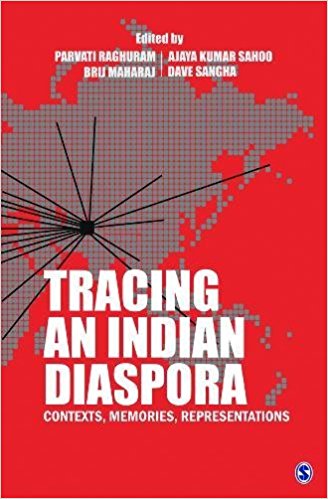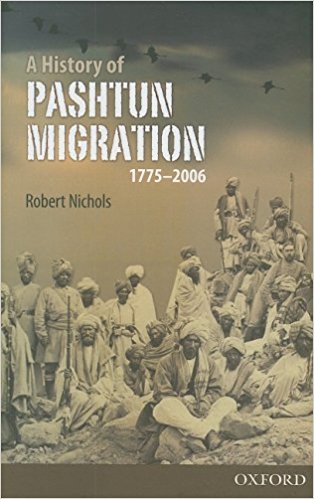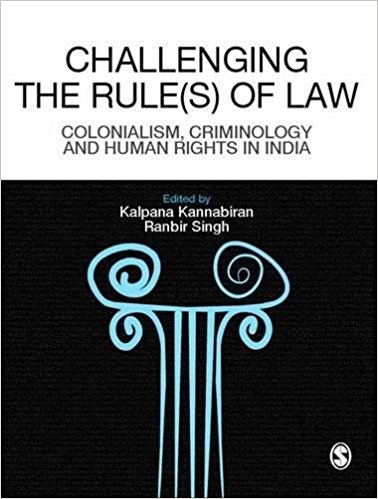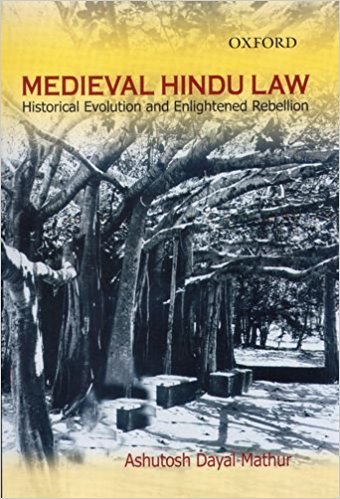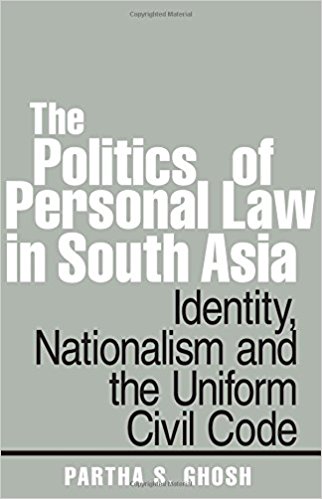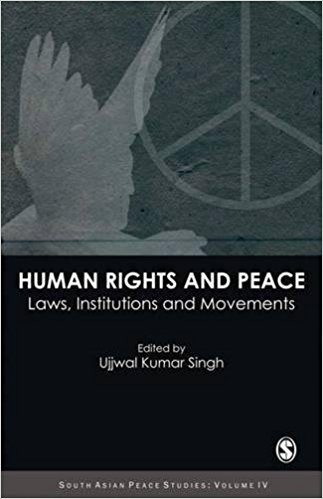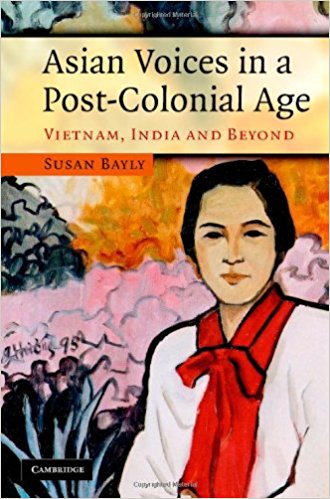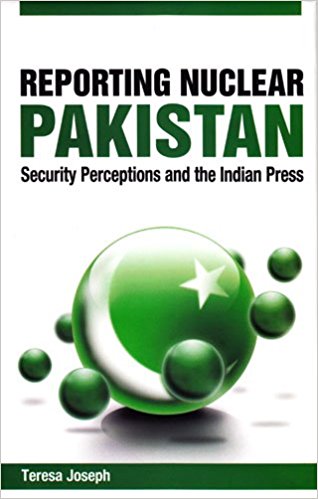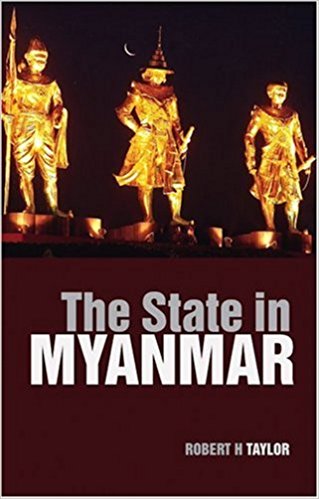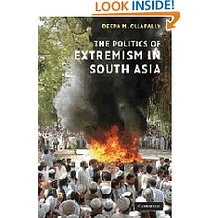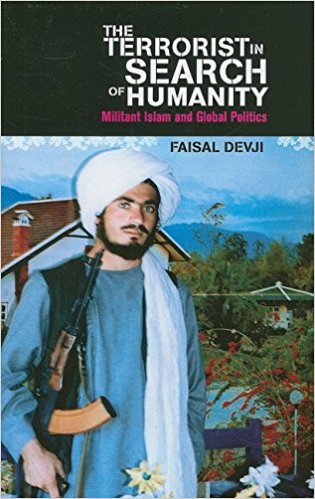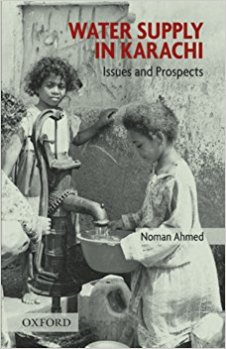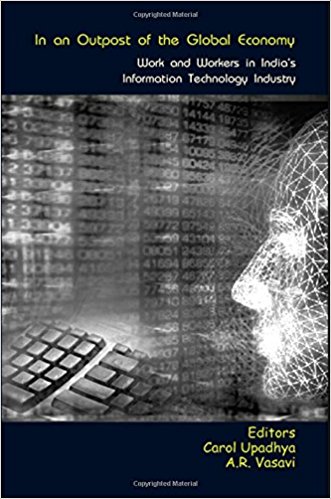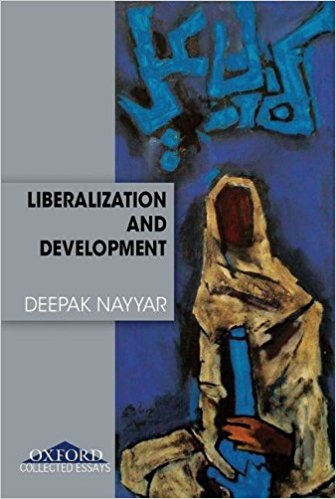Ahmad Nadeem Qasimi (1916–2006) was a major Pakistani poet (Jalal-o Jamal, Shola-i-Gul, Kisht-e Wafa, to name just a few), short story writer (Chaupal, Sannata, Kapaas Ka Phool and many more), and editor of many journals (Savera, Nuqoosh, Funoon, Adab-e Lateef). As one associated with the Progressive Writers Movement, who later distanced himself from it, Qasimi is acknowledged as a writer who portrayal liberal human values.
Archives
March 2009 . VOLUME 33, NUMBER 3This volume is an admirable effort on the part of the editors, translators and commentators to make visible the writings of early twentieth century Bengali Muslim women. The scale of the work is fairly ambitious since the writings of about fifteen women have been anthologized.
This is a book by historians for historians. This is not to deny the value of this collection of essays, which have come out of an academic seminar, but to state clearly wherein lies its quite significant value.
When Jürgen Wasim Frembgen set out to write this book he knew he was attempting the impossible. He was aiming in one slim volume to describe the external practice of Sufis and dervishes throughout the world, and from the dawn of Islam to the present day.
2009
V.S. Pritchett once remarked, tongue only partly in cheek, that boredom was the great resource of the English novelist. There are many ways of understanding this remark. But in one important sense, it may be understood as the cosy Northern equivalent of the Chinese curse—may you live in interesting times.
‘Who is Johnson Thhat? And how has he managed to escape justice for so long, even when in jail?’ reads the intriguing blurb on the back of Farrukh Dhondy’s The Bikini Murders. The title itself hints at a potent combination of sex and violence, reinforced by a lurid picture of bare honey-hued legs and a pair of staring brown eyes. All designed to lure the unsuspecting reader just as the protagonist of the story did with innocent tourists.
2009
V.V. Ganeshananthan’s Love Marriage is a debut novel set against the circumstances of postcolonial Sri Lankan society, torn apart by ethnic conflict. I received my review copy at the time when the media was reporting on the ‘successful’ re-capture of Kilinochi by the Sri Lankan army from the hold of Tamil separatists, and the possibility of finally securing Prabhakaran, the elusive and enigmatic commander of the LTTE.
I made the mistake of reading other reviews of the novel before writing my own. At that time I had not read In the Country of Deceit, and did not know that I would be asked to write on it. Eventually when I did read the novel, it seemed different from the impression I had gathered from the reviews. No one had mentioned that a character in the novel dreams of making a film called Sannata, which would be about the silence of an entire town.
The Bengali likes to sport an intellectual air, which in no way detracts from his deep and abiding interest in things culinary. And the gourmet in him demands that the dishes are properly sequenced, starting with bitter gourd (karela) or even neem leaves cooked with brinjal, depending on the season, followed by a staggering procession of vegetables, fried or in curried form, fish, prawn and meat.
Settling-of-score books can be entertaining, vindictive, or just plain boring. More often than not such a book reveals more about the writer than his subject. Alas, it can also be one long whine—not just me-too, but me-not-him/her, mostly both childish and petulant.
Daughters of India is a collection of profiles of twenty women from diverse communities all over India. It is also a photographic record of artistic activity among these women, ranging from the kolam patterns drawn in front of the house to wall paintings, embroidery and scroll designs.
Should one judge a book by its cover? By its title? Indeed, one should not and I would hasten to speak out against such a superficial and disrespectful attitude towards books and the great effort that it takes to produce them.
When the dowager Maharani of Beri, my god-daughter’s grandmother, visited me for the first time, she brought me a long, narrow pen box, decorated with the curvy exfoliated scrolls characteristic of Kutchi silver.
This book has been several years in the making. Archiving and selecting the photographs by Richard Bartholomew which were exhibited recently at Photo Ink Gallery, New Delhi, must have been an arduous job, since Richard would not ever have even thought of exhibiting them.
The title of this book is extremely apt. As you thumb through this book, you can glimpse the sombre grandeur of the ruins of an imperial empire at Hampi. It is up to the reader whether he/she sees the splendour in the ruins or the ruins of what was once the splendour of Vijayanagar.
The increasing enrollment of girls in school during the past two decades has been accompanied by a less discussed but not insignificant change in the landscape of schooling in South Asia, i.e. the increased feminization of the teaching profession.
Influenced by the works of David Gellner and Eric Hirsch’s Inside Organizations at Work (Oxford, 2001), Cris Shore and Susan Wright’s The Anthropology of Policy: Critical Perspectives on Governance and Power (Routledge, 1997), and Susan Wright’s Anthropology of Organizations (Routledge, 1994), the editorial expedition of Devi Sridhar’s Anthropologists Inside Organizations…
As a commemorative volume, Tracing an Indian Diaspora: Contexts, Memories, Representations celebrates the first ten years of the existence of the Centre for the Study of Indian Diaspora (CSID), Hyderabad and the annual Pravasi Bharatiya Divas, held at Hyderabad in January 2006.
The rugged mountainous region straddling the border between Afghanistan and Pakistan have, for many centuries, produced large flows of emigration. Men (there were almost exclusively male migrants) variously described as ‘Afghans’, Pakhtuns’, ‘Pathans’ and ‘Rohillas’, speaking dialects today such as ‘Pashto’, have made their way in significant numbers into northern India, Arabia and beyond.
The book is, both a challenging and an exciting preposition, challenging, because it brings together the intellectual initiatives of the nineteen contributors drawn from different social sciences disciplines, working on diverse crime themes, in pre-colonial, colonial and postcolonial time-frame in one large volume; and exciting, because it endeavours to run the two thought streams, namely, human rights and criminology in almost all the essays.
The book under review is a modified version of the author’s Ph.D. thesis submitted in 1997, and has taken a full decade to appear in print. The author, far from being distressed at this delay, is actually ‘glad’ that it ‘has taken so much time to appear as a book’. He notes in the preface,
Asubstantive body of scholarly writings, especially from femi-nists, has contributed significantly to the debate on personal laws and the Uniform Civil Code (henceforth UCC) in South Asia.
This is a timely volume of essays, significant in the context of the present times of unprecedented turmoil and a stealthy erosion of the rights and liberties of an ever-increasing majority, who as the editor rightly points out, continue to be rendered ‘rightless’, even amidst an ever-expanding range of human rights instruments and laws.
The subtitle of this book encapsulates its contents. Future historians will undoubtedly judge the eight year long George W. Bush era harshly as being America’s wasted years. Following 9/11, the responsibility for bombing the World Trade Centre towers in New York was affixed on Osama bin Laden and his al Qaeda organization hiding in Afghanistan.
Books on Saudi Arabia have appeared in three distinct waves. The first wave sought to explore and understand the mysterious Saudi world. Harry St. John Philby represents the first wave.
A lot has been written and discussed about the linkage between religion and politics. The Iranian Revolution of the late 1970s in a way epitomized such a relationship. Omid Safi, who grew up in Iran during the revolutionary days and whose family later shifted to the United States, looks at the ideological and political aspects of Islam in the Saljuq era Iran of the eleventh and twelfth centuries.
The Centre for West Asian Studies was set up in the Jamia Millia Islamia in 2005. The Director of the Centre, Rajendra M. Abhyankar, has pointed out in his ‘Introduction’ that the Centre’s area of study is much larger than West Asia, and includes the Horn of Africa, Central Asia, Iran and Turkey.
In Asian Voices in a Postcolonial Age, Susan Bayly presents a perspective on the two countries, Vietnam and India, with a focus on the former, as India primarily steps into her narrative from a comparative vantage point.
Air Marshal Asghar Khan (retd.) has written extensively about the political developments in Pakistan since its inception in 1947. He had the advantage of a ringside view of history and was himself a participant in many of those developments. He is liberal and broadminded in his outlook.
The 26/11 terrorists attack in Mumbai witnessed among other things, a deluge of voices criticizing the Indian media for its coverage of the terror attack. The media was particularly slammed for sensationalizing the news through live coverage of the attacks on the Taj and Oberoi Trident hotels and for creating, if not reflecting, a (public) mood, of warmongering and most importantly, for not questioning the Indian government’s theory of Pakistan’s involvement in the terror attack. In any given situation, the media is the main source of information and therefore, ‘objective journalism’ is demanded, or so it has been argued.
2009
The book Bhutan, a rich pictorial depiction of Bhutan’s history and culture by Lekha Singh is an excellent presentation of the country’s identity. This richness is reflected vividly in the brilliant photographs.
Burma or what is now called Myanmar by its psychopathic military rulers, was living for many years in complete isolation away from world’s attention. Its now deceased architect of the regime, General Ne Win usurped power through a military coup in 1962 contrived a confused ideology of ‘Burmese Way to Socialism,’
There is a plethora of literature on Tibetan refugees both here in India as well as the world outside; in fact it may be hard to list countries that have escaped the Tibetan Diaspora.
Bangladesh and Pakistan:Flirting with Failure in South Asia is essentially a political (and military) history of the two countries since 1971. Yet there is, notably in the case of Pakistan, sufficient recounting of the past to make the present more comprehensible.
Indians of Nepali Origin (INO) could be described as the unrecognized dimension in India-Nepal relations. They are also a little-understood and under-estimated component of India’s pluralistic mosaic.
Reading any book on Sri Lanka at this critical juncture in Sri Lankan history is like preparing oneself for an account of history that is fast getting dated and passé.
Recovering and reconstructing women figures from the past constituted the earliest moves of feminist writing which preceded and then accompanied larger critiques of history on the ground that conventional modes of writing and narration were precisely that which rendered women, indeed gender itself, invisible.
The historical experience of temple desecration in pre-modern India—and, at a more general level, contested history revolving round Indo-Muslim rulers and states—has become a sensitive mass political issue in contemporary India.
Jamal Malik’s book Islam in South Asia: A Short History is anything but a short history of the religion as it evolved in the region. Running a good 500 plus pages this is one of the most dense and comprehensive histories on the subject.
This book tries to explore the condition of Indian Muslims through media images, i.e., through an assessment of the reportage on Indian Muslims by the print and electronic media.
The growing might and influence of the media in shaping the agenda and nature of public discourse compels greater attention to getting behind and beyond the news and analysing the content and trend of what is read, heard or viewed.
Seema Kazi’s book begins on a promising note as she examines the Kashmir conflict from a very different vantage point. Amidst the burgeoning literature on this subject,
Bharat Karnad’s book India’s Nuclear Policy seeks, to use in the words of the author, ‘to reveal the workings of India’s nuclear strategy and posture’. He has sought to translate the ‘credible nuclear deterrence’ policy of India into a militarily sustainable stance. India’s shift from a deliberately vague nuclear doctrine to an overt nuclear weapons posture and the consequent declaration of the nuclear doctrine has been a matter of debate amongst scholars belonging to the security studies/strategic studies community.
The United Nations designated Mahatma Gandhi’s birth anniversary (October 2) as the International Day of Nonviolence. Unfortunately, not even a single day passes nowadays without an act of extremism in South Asia, as it has emerged as a home to a wide spectrum of extremist groups.
Faisal Devji’s latest book continues in the same provocative vein as his first, Landscapes of Jihad: Militancy, Morality, Modernity. He tees off with a short preface, plunging headlong into the opening and arguably the most contentious thesis in his entire book stating that Al Qaeda speaks from within the world of its enemies,
This book is a necessary reading for all policy makers and academics interested in developing International Relations as a discipline in the country.
Challenges to Democracy in India is a collection of presentations made by some public intellectuals at the Nehru Centre in Mumbai between November 2005 and February 2007.
Let me begin this review by borrowing the first sentence of Noman Ahmed’s book which reads: ‘Water supply issues, particularly drinking water supply, are acquiring frontline importance due to the gravity of the prevailing situation’;
2009
Droughts of varying intensity frequently visited the South Asia region, not only the arid and semi arid parts of India and Pakistan, but also countries like Bangladesh and Sri Lanka, where rainfall is considered adequate, also have occasional spells of drought.
2009
One of the much noted achievements of India in the recent past has been its emergence as a leading player in the world market for software and IT enabled services. Apart from the tangible benefits, (eg. export earning and employment) it has also brought along with it substantial intangibles like the organizational and managerial innovations (Arora and Athreya 2002) and credibility which in turn contributed towards creating the imagery of an emerging India.
Persistent mass poverty has been a major problem afflicting a large number of countries in the so-called developing world. Even if one conceputalizes poverty in the extremely narrow sense of inadequate food to generate a certain minimum calorie level,
These two companion volumes put together thirty essays of, in Joseph Stiglitz’s words, ‘one of India’s foremost economists’ who has straddled the worlds of both academia and policy making.


